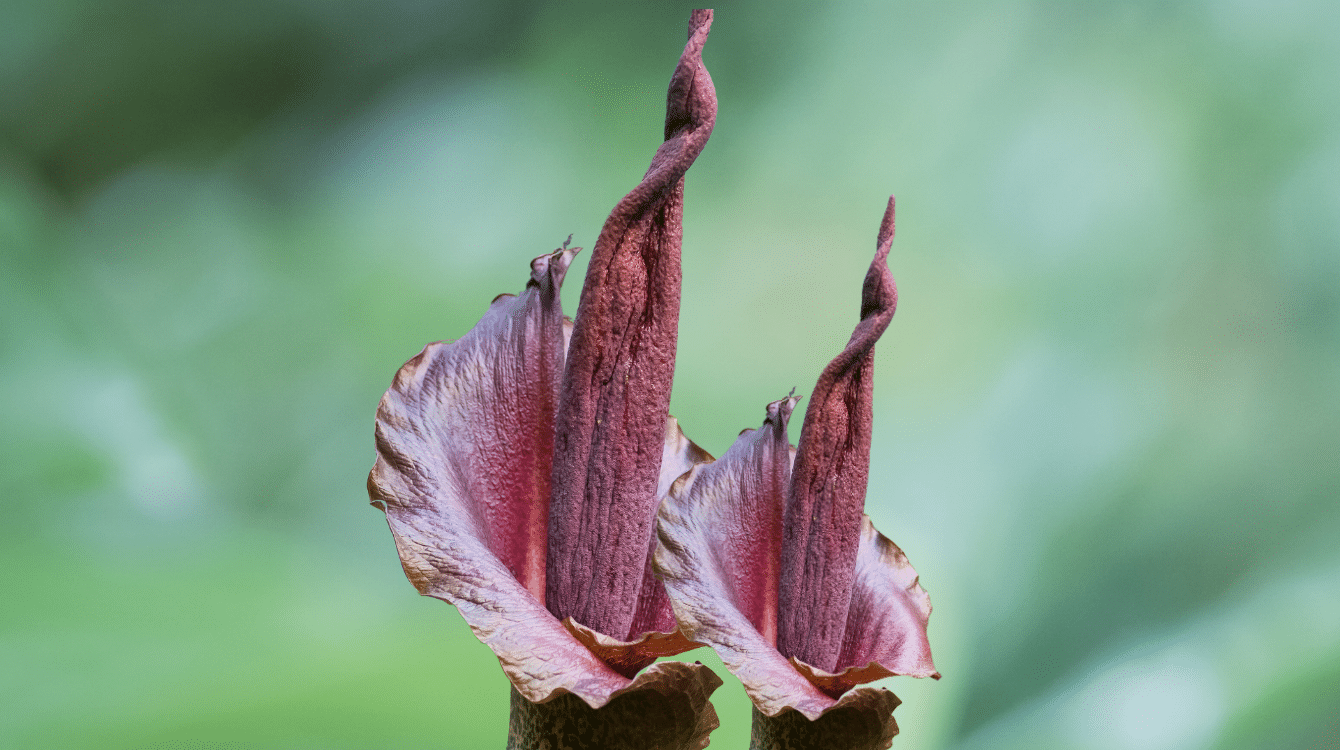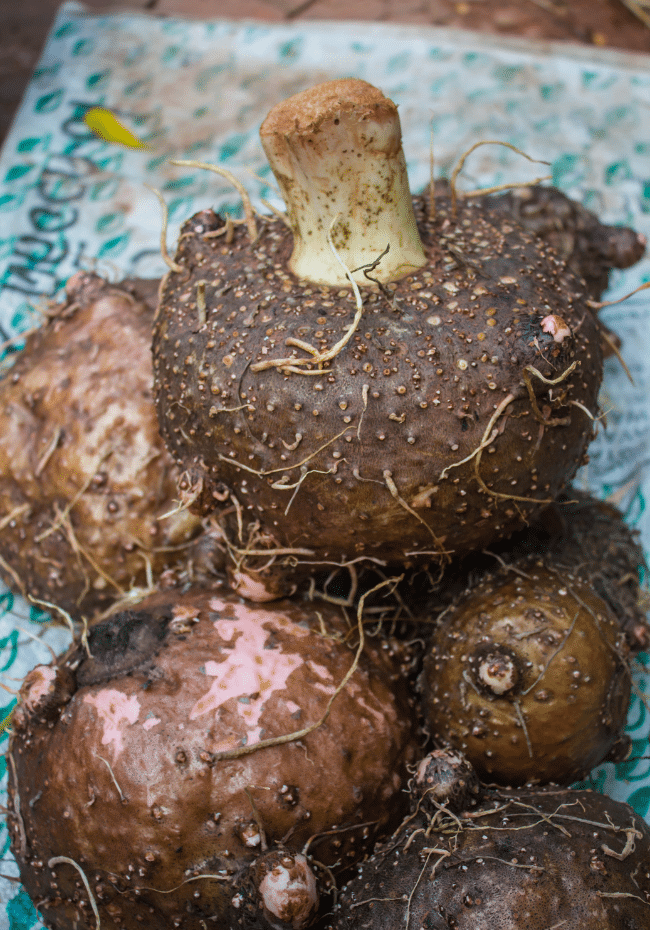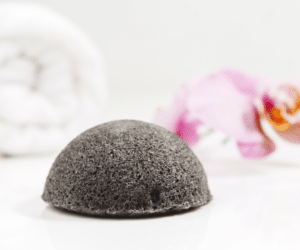
Exploring Digestive Benefits of the Konjac Plant
Exploring Digestive Benefits of the Konjac Plant
- Andrew Yang
- November 29, 2023
- 8:15 am

The konjac plant, scientifically known as Amorphophallus konjac, is a versatile and highly beneficial plant that has gained popularity in the health and wellness industry. With its unique properties, this plant offers a range of digestive benefits that can contribute to overall well-being. In this article, we will explore the digestive advantages of the konjac plant, highlighting its nutritional value, impact on digestion, weight management, blood sugar control, cholesterol management, prebiotic properties, culinary uses, and more.
- What is the Konjac plant?
- Nutritional values of Konjac plant
- 1. Konjac and digestive health
- 2. Managing weight with Konjac
- 3. Konjac and blood sugar control
- 4. Konjac and cholesterol management
- 5. Konjac as a prebiotic
- Konjac recipes and culinary use
- Potential side effects of Konjac
- Konjac as a sustainable plant
- Conclusion
- FAQs
What is the Konjac plant?

Originating from Southeast Asia, the konjac plant is a perennial herb that belongs to the Amorphophallus genus. It features large, robust leaves and a tuberous root system, which is the edible part of the plant. The konjac plant has a long history of use in traditional Chinese and Japanese cuisine, where it is valued for its gelatinous texture and health benefits.
Nutritional values of Konjac plant
The konjac plant is highly regarded for its low-calorie and high-fiber content. It is primarily composed of water and dietary fiber, with minimal fat, protein, and carbohydrates. One of the key components of konjac is glucomannan, a soluble dietary fiber that offers various health advantages.
1. Konjac and digestive health
When it comes to digestive health, konjac plant has proven to be a valuable ally. The high fiber content of konjac stimulates healthy digestion by promoting regular bowel movements. This can be particularly beneficial for individuals who struggle with constipation or irregularity. By increasing fecal bulk and softening stools, konjac helps maintain optimal gastrointestinal function.
2. Managing weight with Konjac
Konjac plant’s low-calorie and high-fiber properties make it a valuable ingredient for weight management. As a low-calorie food, it can be incorporated into meals without significantly increasing the overall caloric content. Additionally, the high fiber content contributes to a feeling of fullness, reducing the likelihood of overeating. Konjac-based products, such as shirataki noodles, are popular alternatives for individuals looking to reduce their calorie intake while still enjoying satisfying meals.
3. Konjac and blood sugar control
For those seeking to manage their blood sugar levels, konjac offers a natural solution. Glucomannan, found abundantly in the konjac plant, has the ability to slow digestion and regulate the release of sugars into the bloodstream. This can be especially beneficial for individuals with diabetes or insulin resistance, as it helps prevent drastic spikes in blood sugar levels after meals.
4. Konjac and cholesterol management
Maintaining healthy cholesterol levels is crucial for cardiovascular health, and konjac plant can play a role in achieving this. Glucomannan in konjac has been shown to trap cholesterol in the digestive system, preventing its absorption into the bloodstream. Regular consumption of konjac-based foods or supplements, in combination with a balanced diet, can help reduce cholesterol levels and lower the risk of heart-related complications.
5. Konjac as a prebiotic
Prebiotics, a type of dietary fiber that feeds beneficial gut bacteria, are essential for a healthy gut microbiome. Konjac plant exhibits prebiotic properties, nourishing the good bacteria in the digestive system. By encouraging the growth of these beneficial microorganisms, konjac helps maintain a balanced gut environment, supporting overall gut health and well-being.
Konjac recipes and culinary use
In addition to its health benefits, konjac plant is a versatile ingredient when it comes to culinary applications. One popular konjac-based food is shirataki noodles, which are low in calories, carbohydrates, and gluten-free. These translucent noodles is a substitute for regular pasta, providing a satisfying texture without the excess calories. Konjac flour is another common form of konjac used in baking and cooking, offering a gluten-free alternative for individuals with dietary restrictions.

Potential side effects of Konjac
While konjac plant is generally safe for consumption, it’s important to be aware of potential side effects. Some individuals may experience bloating or gastrointestinal discomfort when consuming konjac, especially if consumed in excessive amounts. It’s recommended to start with small quantities and drink plenty of water to prevent any discomfort. Individuals with pre-existing digestive disorders should consult their healthcare provider before incorporating konjac into their diet to ensure it is suitable for their specific needs.
Konjac as a sustainable plant
Beyond its health benefits, the konjac plant boasts environmentally friendly qualities. Konjac has minimal water requirements and can grow in various soil conditions, making it an ideal plant for sustainable cultivation. Additionally, konjac-based products, such as biodegradable packaging materials and personal care items, offer eco-friendly alternatives to conventional products. As sustainable food sources become increasingly important, konjac shows great potential in meeting the growing demand for environmentally conscious options.
Conclusion
The konjac plant is a true powerhouse with a plethora of digestive benefits. From aiding digestion and promoting regular bowel movements to supporting weight management, blood sugar control, cholesterol management, and gut health, konjac offers a comprehensive solution. Incorporating konjac-based foods into your diet can be an excellent way to harness these benefits while enjoying versatile and satisfying culinary experiences. However, as with any dietary change, it’s important to listen to your body and consult a healthcare professional if you have any concerns or specific health conditions.
FAQs
1. Is konjac plant good for you?
Yes, the konjac plant, particularly its root, is beneficial for health. Rich in glucomannan, a soluble fiber, konjac is good for weight loss, improved cholesterol levels, and better digestive health. Products like shirataki noodles and konjac supplements are low in calories and offer health-promoting properties. However, it’s advisable to consult with a healthcare professional before making significant dietary changes or adding new supplements, especially for individuals with existing health conditions or those taking medications.
2. What kind of plant is konjac?
Konjac (Amorphophallus konjac) is a perennial plant native to Southeast Asia, known for its starchy corm containing glucomannan fiber. Valued for its culinary uses, konjac is cultivated for products like shirataki noodles and konjac jelly. Traditionally used in Asian cuisines, it has gained popularity for its low-calorie content and health benefits.
3. Are konjac noodles healthy?
Yes, konjac noodles are a healthy option. Made from glucomannan, a soluble fiber, they have benefits like weight loss, improved cholesterol levels, and better digestion. Low in calories and carbohydrates, and gluten-free, they are suitable for various dietary preferences. However, as with any food, it’s important to include them as part of a balanced diet, and individuals with specific health concerns should consult healthcare professionals.
4. Is konjac good for skin?
Yes, konjac is good for the skin. Derived from the konjac plant’s root, its glucomannan content makes it hydrating and gentle. Konjac sponges, popular in skincare, exfoliate the skin, remove dead cells, and promote a smoother complexion. Known for its water-retaining properties, konjac contributes to skin hydration, making it a beneficial addition to many skincare routines.













